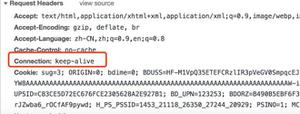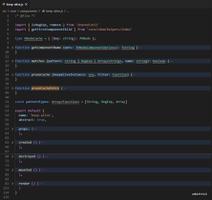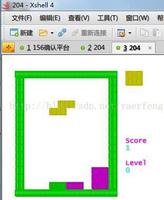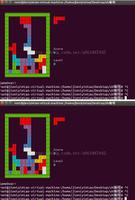Vue源码解析,keep-alive是如何实现缓存的?
前言
在性能优化上,最常见的手段就是缓存。对需要经常访问的资源进行缓存,减少请求或者是初始化的过程,从而降低时间或内存的消耗。vue 为我们提供了缓存组件 keep-alive,它可用于路由级别或组件级别的缓存。
但其中的缓存原理你是否了解,组件缓存渲染又是如何工作。那么本文就来解析 keep-alive 的原理。
LRU策略
在使用 keep-alive 时,可以添加 prop 属性 include、exclude、max 允许组件有条件的缓存。既然有限制条件,旧的组件需要删除缓存,新的组件就需要加入到最新缓存,那么要如何制定对应的策略?
LRU(Least recently used,最近最少使用)策略根据数据的历史访问记录来进行淘汰数据。LRU 策略的设计原则是,如果一个数据在最近一段时间没有被访问到,那么在将来它被访问的可能性也很小。也就是说,当限定的空间已存满数据时,应当把最久没有被访问到的数据淘汰。
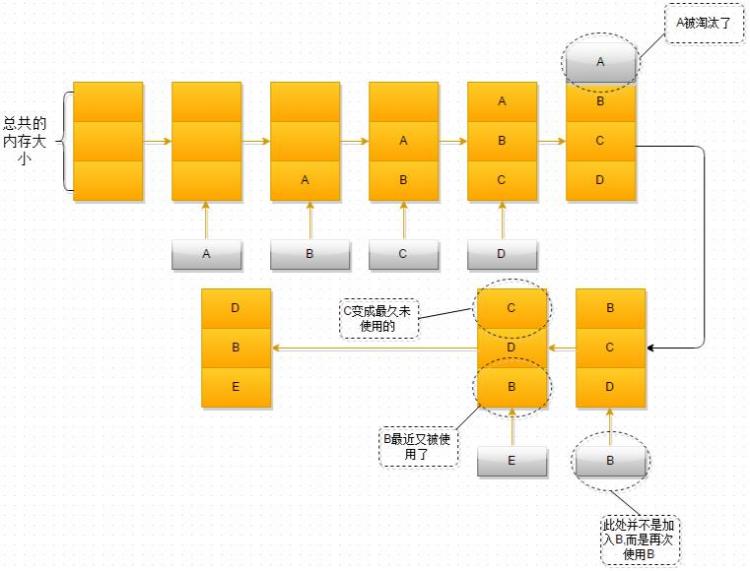
- 现在缓存最大只允许存3个组件,ABC三个组件依次进入缓存,没有任何问题
- 当D组件被访问时,内存空间不足,A是最早进入也是最旧的组件,所以A组件从缓存中删除,D组件加入到最新的位置
- 当B组件被再次访问时,由于B还在缓存中,B移动到最新的位置,其他组件相应的往后一位
- 当E组件被访问时,内存空间不足,C变成最久未使用的组件,C组件从缓存中删除,E组件加入到最新的位置
keep-alive 缓存机制便是根据LRU策略来设置缓存组件新鲜度,将很久未访问的组件从缓存中删除。了解完缓存机制,接下来进入源码,看看keep-alive组件是如何实现的。
组件实现原理
// 源码位置:src/core/components/keep-alive.jsexport default {
name: 'keep-alive',
abstract: true,
props: {
include: patternTypes,
exclude: patternTypes,
max: [String, Number]
},
created () {
this.cache = Object.create(null)
this.keys = []
},
destroyed () {
for (const key in this.cache) {
pruneCacheEntry(this.cache, key, this.keys)
}
},
mounted () {
this.$watch('include', val => {
pruneCache(this, name => matches(val, name))
})
this.$watch('exclude', val => {
pruneCache(this, name => !matches(val, name))
})
},
render () {
const slot = this.$slots.default
const vnode: VNode = getFirstComponentChild(slot)
const componentOptions: ?VNodeComponentOptions = vnode && vnode.componentOptions
if (componentOptions) {
// check pattern
const name: ?string = getComponentName(componentOptions)
const { include, exclude } = this
if (
// not included
(include && (!name || !matches(include, name))) ||
// excluded
(exclude && name && matches(exclude, name))
) {
return vnode
}
const { cache, keys } = this
const key: ?string = vnode.key == null
// same constructor may get registered as different local components
// so cid alone is not enough (#3269)
? componentOptions.Ctor.cid + (componentOptions.tag ? `::${componentOptions.tag}` : '')
: vnode.key
if (cache[key]) {
vnode.componentInstance = cache[key].componentInstance
// make current key freshest
remove(keys, key)
keys.push(key)
} else {
cache[key] = vnode
keys.push(key)
// prune oldest entry
if (this.max && keys.length > parseInt(this.max)) {
pruneCacheEntry(cache, keys[0], keys, this._vnode)
}
}
vnode.data.keepAlive = true
}
return vnode || (slot && slot[0])
}
}
kepp-alive 实际是一个抽象组件,只对包裹的子组件做处理,并不会和子组件建立父子关系,也不会作为节点渲染到页面上。在组件开头就设置 abstract 为 true,代表该组件是一个抽象组件。
// 源码位置: src/core/instance/lifecycle.jsexport function initLifecycle (vm: Component) {
const options = vm.$options
// locate first non-abstract parent
let parent = options.parent
if (parent && !options.abstract) {
while (parent.$options.abstract && parent.$parent) {
parent = parent.$parent
}
parent.$children.push(vm)
}
vm.$parent = parent
// ...
}
那么抽象组件是如何忽略这层关系的呢?在初始化阶段会调用 initLifecycle,里面判断父级是否为抽象组件,如果是抽象组件,就选取抽象组件的上一级作为父级,忽略与抽象组件和子组件之间的层级关系。
回到 keep-alive 组件,组件是没有编写
template 模板,而是由 render 函数决定渲染结果。
const slot = this.$slots.defaultconst vnode: VNode = getFirstComponentChild(slot)
如果 keep-alive 存在多个子元素,keep-alive 要求同时只有一个子元素被渲染。所以在开头会获取插槽内的子元素,调用 getFirstComponentChild 获取到第一个子元素的 VNode。
// check patternconst name: ?string = getComponentName(componentOptions)
const { include, exclude } = this
if (
// not included
(include && (!name || !matches(include, name))) ||
// excluded
(exclude && name && matches(exclude, name))
) {
return vnode
}
function matches (pattern: string | RegExp | Array<string>, name: string): boolean {
if (Array.isArray(pattern)) {
return pattern.indexOf(name) > -1
} else if (typeof pattern === 'string') {
return pattern.split(',').indexOf(name) > -1
} else if (isRegExp(pattern)) {
return pattern.test(name)
}
return false
}
接着判断当前组件是否符合缓存条件,组件名与include不匹配或与exclude匹配都会直接退出并返回 VNode,不走缓存机制。
const { cache, keys } = thisconst key: ?string = vnode.key == null
// same constructor may get registered as different local components
// so cid alone is not enough (#3269)
? componentOptions.Ctor.cid + (componentOptions.tag ? `::${componentOptions.tag}` : '')
: vnode.key
if (cache[key]) {
vnode.componentInstance = cache[key].componentInstance
// make current key freshest
remove(keys, key)
keys.push(key)
} else {
cache[key] = vnode
keys.push(key)
// prune oldest entry
if (this.max && keys.length > parseInt(this.max)) {
pruneCacheEntry(cache, keys[0], keys, this._vnode)
}
}
vnode.data.keepAlive = true
匹配条件通过会进入缓存机制的逻辑,如果命中缓存,从 cache 中获取缓存的实例设置到当前的组件上,并调整 key 的位置将其放到最后。如果没命中缓存,将当前 VNode 缓存起来,并加入当前组件的 key。如果缓存组件的数量超出 max 的值,即缓存空间不足,则调用 pruneCacheEntry 将最旧的组件从缓存中删除,即 keys[0] 的组件。之后将组件的 keepAlive 标记为 true,表示它是被缓存的组件。
function pruneCacheEntry (cache: VNodeCache,
key: string,
keys: Array<string>,
current?: VNode
) {
const cached = cache[key]
if (cached && (!current || cached.tag !== current.tag)) {
cached.componentInstance.$destroy()
}
cache[key] = null
remove(keys, key)
}
pruneCacheEntry 负责将组件从缓存中删除,它会调用组件 $destroy 方法销毁组件实例,缓存组件置空,并移除对应的 key。
mounted () {this.$watch('include', val => {
pruneCache(this, name => matches(val, name))
})
this.$watch('exclude', val => {
pruneCache(this, name => !matches(val, name))
})
}
function pruneCache (keepAliveInstance: any, filter: Function) {
const { cache, keys, _vnode } = keepAliveInstance
for (const key in cache) {
const cachedNode: ?VNode = cache[key]
if (cachedNode) {
const name: ?string = getComponentName(cachedNode.componentOptions)
if (name && !filter(name)) {
pruneCacheEntry(cache, key, keys, _vnode)
}
}
}
}
keep-alive 在 mounted 会监听 include 和 exclude 的变化,属性发生改变时调整缓存和 keys 的顺序,最终调用的也是 pruneCacheEntry。
小结:cache 用于缓存组件,keys 存储组件的 key,根据LRU策略来调整缓存组件。keep-alive 的 render 中最后会返回组件的 VNode,因此我们也可以得出一个结论,keep-alive 并非真的不会渲染,而是渲染的对象是包裹的子组件。
组件渲染流程
温馨提示:这部分内容需要对 render 和 patch 过程有了解
渲染过程最主要的两个过程就是 render 和 patch,在 render 之前还会有模板编译,render 函数就是模板编译后的产物,它负责构建 VNode 树,构建好的 VNode 会传递给 patch,patch 根据 VNode 的关系生成真实dom节点树。
这张图描述了 vue 视图渲染的流程:
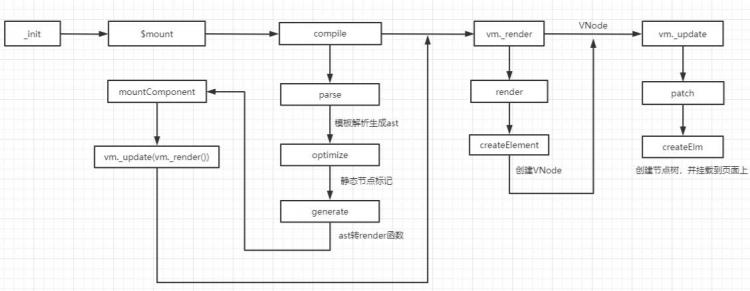
VNode构建完成后,最终会被转换成真实dom,而 patch 是必经的过程。为了更好的理解组件渲染的过程,假设 keep-alive 包括的组件有A和B两个组件,默认展示A组件。
初始化渲染
组件在 patch 过程是会执行 createComponent 来挂载组件的,A组件也不例外。
// 源码位置:src/core/vdom/patch.jsfunction createComponent (vnode, insertedVnodeQueue, parentElm, refElm) {
let i = vnode.data
if (isDef(i)) {
const isreactivated = isDef(vnode.componentInstance) && i.keepAlive
if (isDef(i = i.hook) && isDef(i = i.init)) {
i(vnode, false /* hydrating */)
}
// after calling the init hook, if the vnode is a child component
// it should've created a child instance and mounted it. the child
// component also has set the placeholder vnode's elm.
// in that case we can just return the element and be done.
if (isDef(vnode.componentInstance)) {
initComponent(vnode, insertedVnodeQueue)
insert(parentElm, vnode.elm, refElm)
if (isTrue(isreactivated)) {
reactivateComponent(vnode, insertedVnodeQueue, parentElm, refElm)
}
return true
}
}
}
isReactivated 标识组件是否重新激活。在初始化渲染时,A组件还没有初始化构造完成,componentInstance 还是 undefined。而A组件的 keepAlive 是 true,因为 keep-alive 作为父级包裹组件,会先于A组件挂载,也就是 kepp-alive 会先执行 render 的过程,A组件被缓存起来,之后对插槽内第一个组件(A组件)的 keepAlive 赋值为 true,不记得这个过程请看上面组件实现的代码。所以此时的 isReactivated 是 false。
接着会调用 init 函数进行组件初始化,它是组件的一个钩子函数:
// 源码位置:src/core/vdom/create-component.jsconst componentVNodeHooks = {
init (vnode: VNodeWithData, hydrating: boolean): ?boolean {
if (
vnode.componentInstance &&
!vnode.componentInstance._isDestroyed &&
vnode.data.keepAlive
) {
// kept-alive components, treat as a patch
const mountedNode: any = vnode // work around flow
componentVNodeHooks.prepatch(mountedNode, mountedNode)
} else {
const child = vnode.componentInstance = createComponentInstanceForVnode(
vnode,
activeInstance
)
child.$mount(hydrating ? vnode.elm : undefined, hydrating)
}
},
// ...
}
createComponentInstanceForVnode 内会 new Vue 构造组件实例并赋值到 componentInstance,随后调用 $mount 挂载组件。
回 createComponent,继续走下面的逻辑:
if (isDef(vnode.componentInstance)) {initComponent(vnode, insertedVnodeQueue)
insert(parentElm, vnode.elm, refElm)
if (isTrue(isReactivated)) {
reactivateComponent(vnode, insertedVnodeQueue, parentElm, refElm)
}
return true
}
调用 initComponent 将 vnode.elm 赋值为真实dom,然后调用 insert 将组件的真实dom插入到父元素中。
所以在初始化渲染中,keep-alive 将A组件缓存起来,然后正常的渲染A组件。
缓存渲染
当切换到B组件,再切换回A组件时,A组件命中缓存被重新激活。
再次经历 patch 过程,keep-alive 是根据插槽获取当前的组件,那么插槽的内容又是如何更新实现缓存?
const isRealElement = isDef(oldVnode.nodeType)if (!isRealElement && sameVnode(oldVnode, vnode)) {
// patch existing root node
patchVnode(oldVnode, vnode, insertedVnodeQueue, null, null, removeOnly)
}
非初始化渲染时,patch 会调用 patchVnode 对比新旧节点。
// 源码位置:src/core/vdom/patch.jsfunction patchVnode (
oldVnode,
vnode,
insertedVnodeQueue,
ownerArray,
index,
removeOnly
) {
// ...
let i
const data = vnode.data
if (isDef(data) && isDef(i = data.hook) && isDef(i = i.prepatch)) {
i(oldVnode, vnode)
}
// ...
}
patchVnode 内会调用钩子函数 prepatch。
// 源码位置: src/core/vdom/create-component.jsprepatch (oldVnode: MountedComponentVNode, vnode: MountedComponentVNode) {
const options = vnode.componentOptions
const child = vnode.componentInstance = oldVnode.componentInstance
updateChildComponent(
child,
options.propsData, // updated props
options.listeners, // updated listeners
vnode, // new parent vnode
options.children // new children
)
},
updateChildComponent 就是更新的关键方法,它里面主要是更新实例的一些属性:
// 源码位置:src/core/instance/lifecycle.jsexport function updateChildComponent (
vm: Component,
propsData: ?Object,
listeners: ?Object,
parentVnode: MountedComponentVNode,
renderChildren: ?Array<VNode>
) {
// ...
// Any static slot children from the parent may have changed during parent's
// update. Dynamic scoped slots may also have changed. In such cases, a forced
// update is necessary to ensure correctness.
const needsForceUpdate = !!(
renderChildren || // has new static slots
vm.$options._renderChildren || // has old static slots
hasDynamicScopedSlot
)
// ...
// resolve slots + force update if has children
if (needsForceUpdate) {
vm.$slots = resolveSlots(renderChildren, parentVnode.context)
vm.$forceUpdate()
}
}
Vue.prototype.$forceUpdate = function () {
const vm: Component = this
if (vm._watcher) {
// 这里最终会执行 vm._update(vm._render)
vm._watcher.update()
}
}
从注释中可以看到 needsForceUpdate 是有插槽才会为 true,keep-alive 符合条件。首先调用 resolveSlots 更新 keep-alive 的插槽,然后调用 $forceUpdate 让 keep-alive 重新渲染,再走一遍 render。因为A组件在初始化已经缓存了,keep-alive 直接返回缓存好的A组件 VNode。VNode 准备好后,又来到了 patch 阶段。
function createComponent (vnode, insertedVnodeQueue, parentElm, refElm) {let i = vnode.data
if (isDef(i)) {
const isReactivated = isDef(vnode.componentInstance) && i.keepAlive
if (isDef(i = i.hook) && isDef(i = i.init)) {
i(vnode, false /* hydrating */)
}
// after calling the init hook, if the vnode is a child component
// it should've created a child instance and mounted it. the child
// component also has set the placeholder vnode's elm.
// in that case we can just return the element and be done.
if (isDef(vnode.componentInstance)) {
initComponent(vnode, insertedVnodeQueue)
insert(parentElm, vnode.elm, refElm)
if (isTrue(isReactivated)) {
reactivateComponent(vnode, insertedVnodeQueue, parentElm, refElm)
}
return true
}
}
}
A组件再次经历 createComponent 的过程,调用 init。
const componentVNodeHooks = {init (vnode: VNodeWithData, hydrating: boolean): ?boolean {
if (
vnode.componentInstance &&
!vnode.componentInstance._isDestroyed &&
vnode.data.keepAlive
) {
// kept-alive components, treat as a patch
const mountedNode: any = vnode // work around flow
componentVNodeHooks.prepatch(mountedNode, mountedNode)
} else {
const child = vnode.componentInstance = createComponentInstanceForVnode(
vnode,
activeInstance
)
child.$mount(hydrating ? vnode.elm : undefined, hydrating)
}
},
}
这时将不再走 $mount 的逻辑,只调用 prepatch 更新实例属性。所以在缓存组件被激活时,不会执行 created 和 mounted 的生命周期函数。
回到 createComponent,此时的 isReactivated 为 true,调用 reactivateComponent:
function reactivateComponent (vnode, insertedVnodeQueue, parentElm, refElm) {let i
// hack for #4339: a reactivated component with inner transition
// does not trigger because the inner node's created hooks are not called
// again. It's not ideal to involve module-specific logic in here but
// there doesn't seem to be a better way to do it.
let innerNode = vnode
while (innerNode.componentInstance) {
innerNode = innerNode.componentInstance._vnode
if (isDef(i = innerNode.data) && isDef(i = i.transition)) {
for (i = 0; i < cbs.activate.length; ++i) {
cbs.activate[i](emptyNode, innerNode)
}
insertedVnodeQueue.push(innerNode)
break
}
}
// unlike a newly created component,
// a reactivated keep-alive component doesn't insert itself
insert(parentElm, vnode.elm, refElm)
}
最后调用 insert 插入组件的dom节点,至此缓存渲染流程完成。
小结:组件首次渲染时,keep-alive 会将组件缓存起来。等到缓存渲染时,keep-alive 会更新插槽内容,之后 $forceUpdate 重新渲染。这样在 render 时就获取到最新的组件,如果命中缓存则从缓存中返回 VNode。
总结
keep-alive 组件是抽象组件,在对应父子关系时会跳过抽象组件,它只对包裹的子组件做处理,主要是根据LRU策略缓存组件 VNode,最后在 render 时返回子组件的 VNode。缓存渲染过程会更新 keep-alive 插槽,重新再 render 一次,从缓存中读取之前的组件 VNode 实现状态缓存。
作者:WahFung
出处:http://www.cnblogs.com/chanwahfung/
站长推荐
1.云服务推荐: 国内主流云服务商,各类云产品的最新活动,优惠券领取。地址:阿里云腾讯云华为云
2.广告联盟: 整理了目前主流的广告联盟平台,如果你有流量,可以作为参考选择适合你的平台点击进入
链接: http://www.fly63.com/article/detial/9600
以上是 Vue源码解析,keep-alive是如何实现缓存的? 的全部内容, 来源链接: utcz.com/a/62833.html

